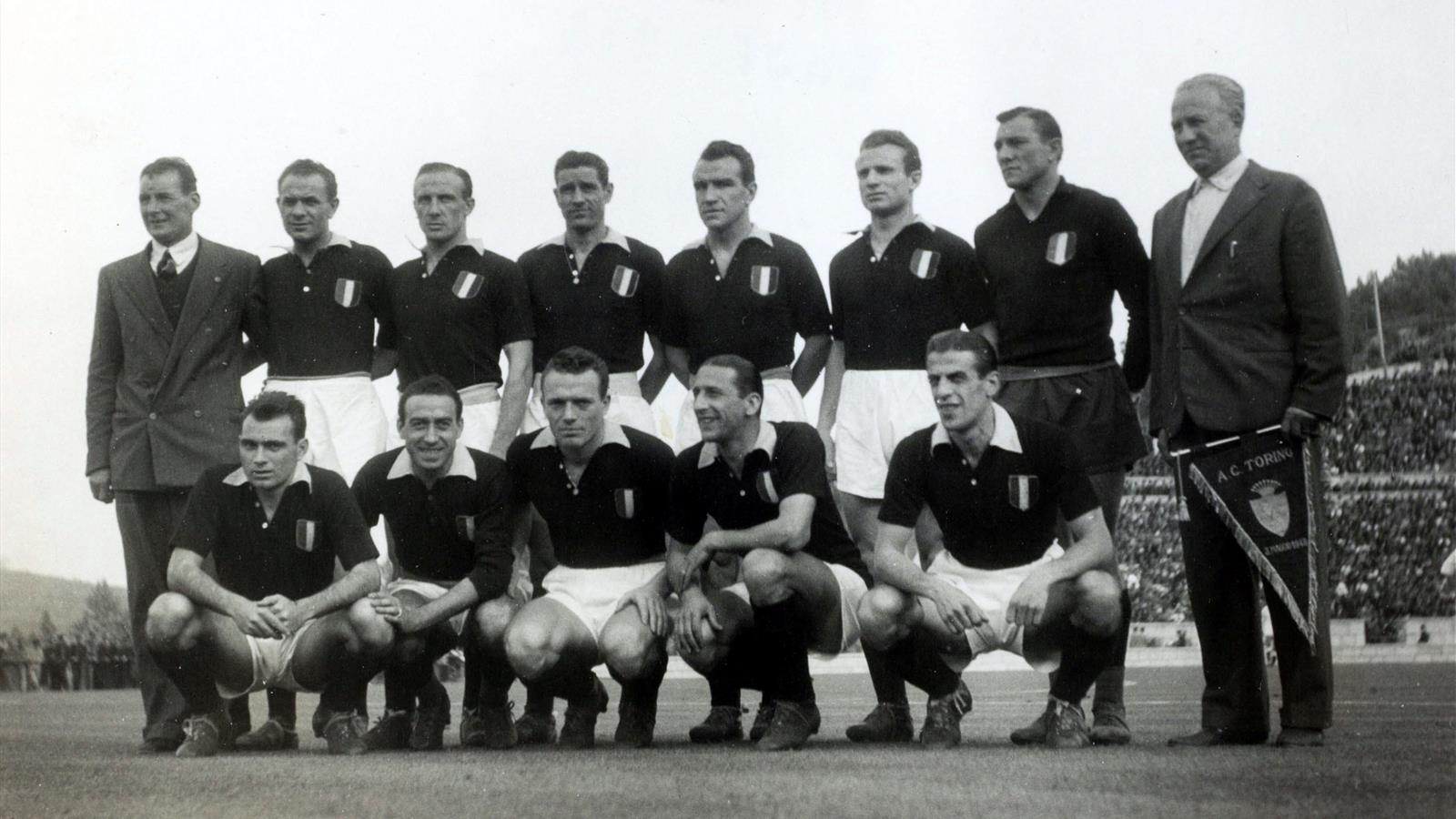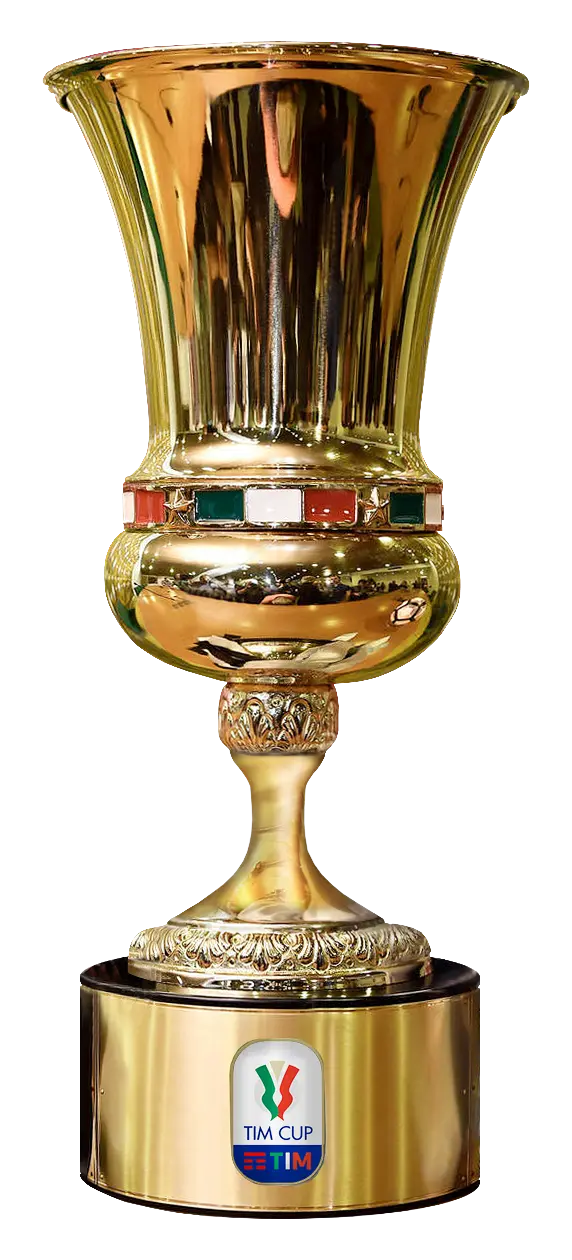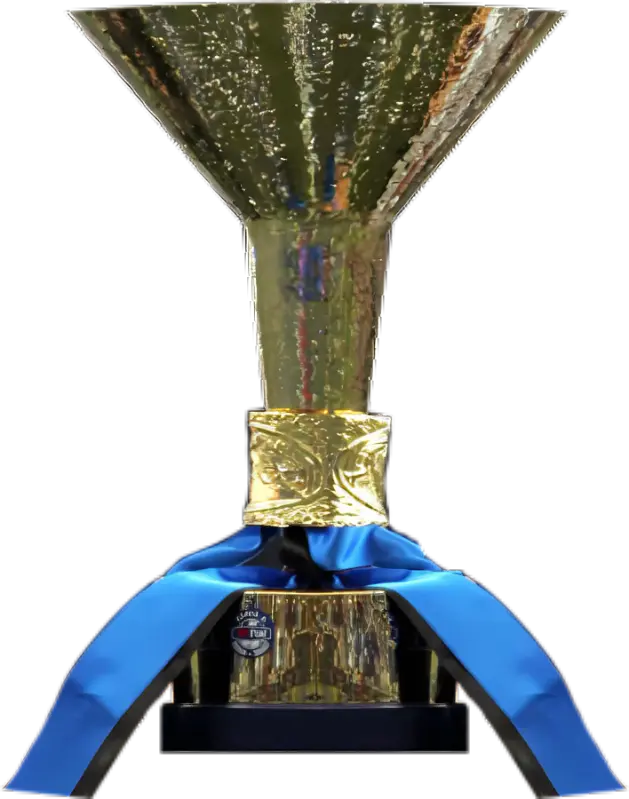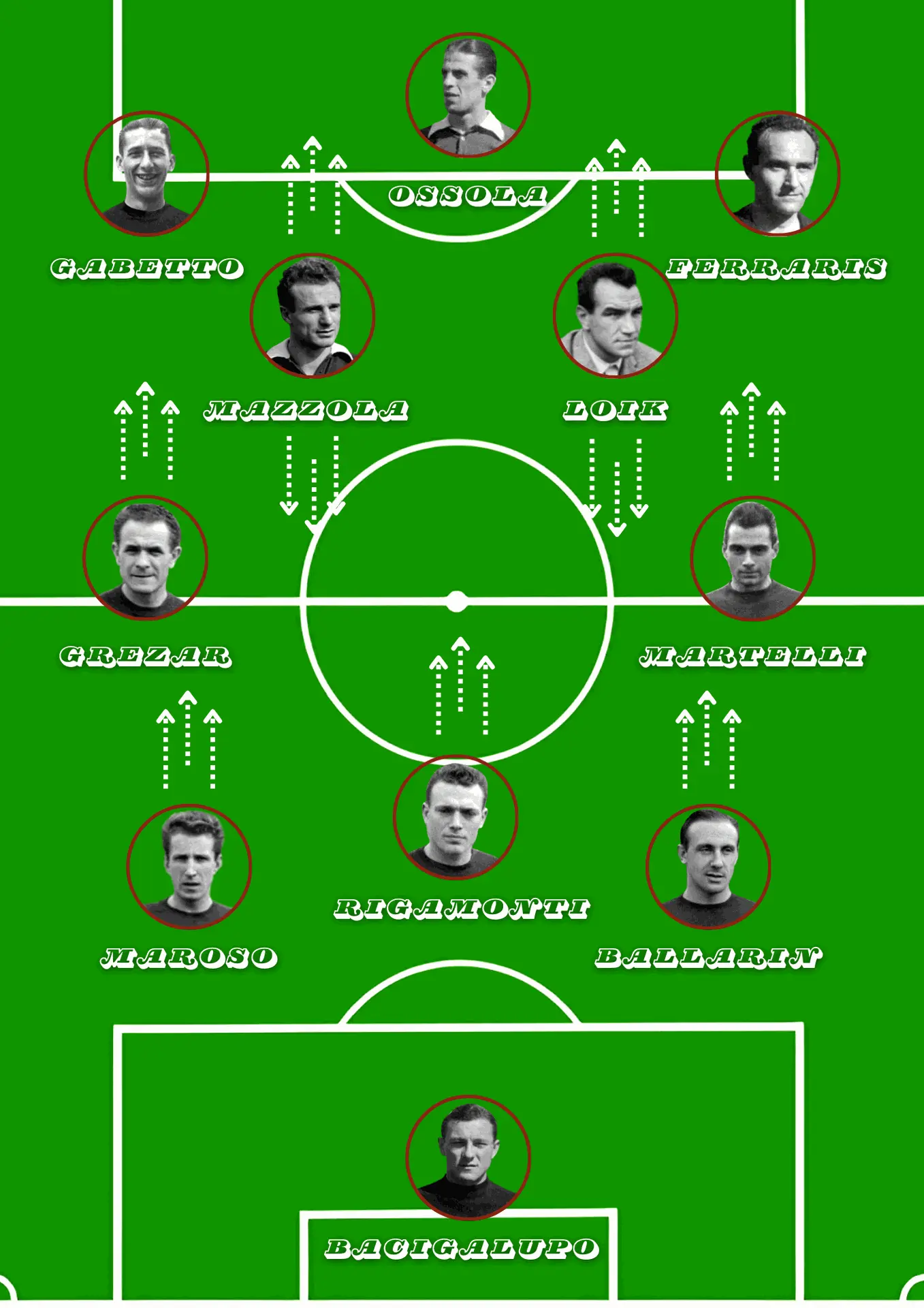One of the best Italian teams of all time
From peak to crash
Grande Torino (Italian: "Greater Turin") was the historic Italian football team of Torino Football Club in the 1940s. This team was considered by many to be the best team of that time.

Ferruccio Novo, the man of change
The beginnings of this epic story began in the summer of 1939, during which the industrialist Ferruccio Novo, at the age of 42, took over as president of the club, succeeding Giovanni Battista Cuniberti.
A former “mediocre” player in his own words, he is a fervent fan of the club and has held several administrative positions previously. Following the advice of Vittorio Pozzo, the new president established a policy close to the management of English clubs of the time. Surrounded by competent members such as former players, he brought new life to the Italian club.
His first success in the transfer market was the purchase of 18-year-old Franco Ossola for a price of 55,000 Italian lire, a large sum for the time.
But the club's growth came to a halt with the entry into the war of Italy, which had remained neutral until then, on June 10, 1940 in the Second World War alongside the Axis powers. This war, which according to Benito Mussolini was supposed to be quick, had the players resting at home.
The following year, Ossola who played more showed his value, he scored 14 goals in 22 matches. Finishing 7th with 30 points, 9 points less than the champions Bologna, Torino were gradually approaching the summits of Italian football. At the same time, the team which had not changed much saw two of its players retire: Oberdan Ussello and Raf Vallone.
An English tactic
Sensing the general climate of lack of investment, Novo did the opposite and, with a view to the 1941-42 season, acquired five new players:
- Ferraris II, the left winger of Italy, champion of the 1938 FIFA World Cup for 250,000 lire from Ambrosiana.
- Romeo Menti, a lively winger with a powerful shot from Fiorentina.
- Alfredo Bodoira, Felice Borel and Guglielmo Gabetto, players from the rival club: Juventus Turin.
From a tactical point of view, the Italian team is based on the tactical work of Herbert Chapman, Arsenal coach in the 1930s who implemented the 3-2-2-3 also called WM. In this composition, there are 3 defenders, 4 midfielders and 3 attackers. Chapman also implemented a defensive midfield system, which became a "stopper", and which brought in full-backs, creating a more balanced composition.
Management towards the top
With this idea, Novo hired Hungarian coach András Kuttik, Ellena became a central midfielder. The 1941-1942 season was the prerogative of Roma. Two defeats were Torino's undoing that year: a first-round elimination from the Coppa Italia and a Serie A defeat with three matches remaining against Venezia, who were managed by Ezio Loik and Valentino Mazzola
In the 1941-42 season, Torino was a very competitive team, capable of aiming for the heights in the league. But this team was stopped twice by the Venezia of Valentino Mazzola and Ezio Loik. Valentino Mazzola is one of the best playmakers in the world, very complete, he can play in midfield as well as in attack. Ezio Loik is a winger with strong dribbling skills and great speed.
Novo, who finally wants to win titles, goes directly to the locker room at the end of a Venezia-Torino in order to recruit the two players, in the end, they join Torino for the sum of 1,400,000 lire. Two other players join them: Petron and Mezzadra.
The beginning of success
For the start of the 1942-43 season, Torino had one of the best teams in the championship. At the goalkeeper position we can find Bodoira or Cavalli, in defense Ferrini, Ellena, Piacentini and Cassano, in midfield, Baldi, Gallea, Loik and Mazzola, in attack Menti, Ferrari, Gabetto and Ossola. However, the beginnings were disappointing, which made for a crazy championship until the end; it was during the last day of the championship that Torino won the Serie A thanks to a goal from Mazzola.
During that same season, Torino won the Coppa Italia against its rival, Venezia, Torino becoming the first team in Italy to do the double. The match ended with a thunderous score of 4 goals to 0 with a double from Gabetto and goals from Mazzola and Ferraris II.
So close to their goal
During the year 1944, Italy found itself destroyed by the World War which took place. The championship ends up being played in group stages. In terms of transfers, changes are rare and difficult; incessant bombing prevents this, notably through the destruction of railway lines. Travel is therefore most often done on foot, during long walks.
Clubs must think carefully about preventing their players from being sent to the front line. Shenanigans are thus born, this is the case of the Novo club which works in collaboration with the Fiat brand by creating the Fiat Torino. The trick is simple, players are classified as workers of Agnelli's company. Photos show them in factories, in action. The players are placed in fictitious positions but "essential" to the proper functioning of the company and therefore cannot be placed on the front line.
In the war championship played in the north, Torino crushes its opponents, Genoa (7-1), Biella (7-1), Alexandria (7-0), Novara (8-2) and Juventus (5-0 ). Subsequently, they faced the great Ambrosiana-Inter (current Inter Milan) which they managed to beat.
Despite their good results, the team failed to win the tournament, in particular because of a national team propaganda match organized 2 days before the match against Spezia Calcio.
Confirmation Season
Following the Second World War, Italy was a broken, ruined and unrecognizable country. The lines of communication are destroyed and travel is made complicated, but the Italian federation decides to relaunch the national championship. And this, in a form which no longer existed since 1929, that is to say with a going then returning phase.
In the north of the country, we find a Northern Italian championship which is a continuation of the Serie A championship of the 1943-44 season. In the south, it is a mix between teams from Serie A and Serie B. Once this first phase was completed, the four best teams from each league qualified for a final round which determined the winner of the championship. The championship being different from the current formula, is not assimilated to the current Serie A and does not appear in the statistics.
During this 1945-46 season which began on October 14, 1945, Ferruccio Novo gave new impetus to his team with once again a wave of recruitments. Among them, Valerio Bacigalugo, former Savona goalkeeper, defender Aldo Ballarin, the return of Virgilio Maroso, central midfielder Mario Rigamonti, winger Eusebio Castigiano and striker Pietro Ferraris. There is no longer any doubt, it is indeed the Grande Torino.
However, on the first day of the championship, Torino lost to its long-time rival, Juventus thanks in particular to a goal from Silvio Piola from the penalty spot. But this is only a small parenthesis, in the next two matches, Torino scored 11 goals and conceded 0 against Genoa and Sampierdarenese. During the return phase, the men of the Novo club beat Juventus with a goal from Eusebio Castigliano. Torino finishes this Northern championship with 3 points ahead of Inter Milan, who are ahead of Juventus and AC Milan. To the south, we find Napoli, AS Bari, AS Roma and Pro Livorno.
This final phase brings a resounding start, Torino who played Roma, scored 6 goals in just 30 minutes in the first half, they will score a seventh in the second half. Torino continues, 7-1 against Naples. They lost again against Juventus but on the last day they exploded Pro Livorno 9-1 while Juventus was held to a 1-1 draw in Naples. Torino thus wins its 3rd Scudetto in its history.
The best team in the country
With the trauma of war fading somewhat, Italian football returned to a more common one-round system for the 1946-47 season. Torino strengthens with the return of Romeo Menti, and the arrivals of Danilo Martelli, Francesco Rosetta, Dante Piani and Guido Tieghi.
Under the leadership of coach Luigi Ferrero, Torino began the season with a draw against Triestina, a narrow victory against Lazio, a second draw against Sampdoria and a defeat against Venezia. For their 5th match of the season, it is the Turin derby, another disappointing draw, in five matches, Torino has only 5 points. A slight doubt arises, which is quickly eclipsed later. From the sixth day of the championship, Torino had six consecutive victories.
One of their highlight matches was their 7-2 victory over Fiorentina, but Torino lost the championship lead in their defeat to Alessandria. Another draw against Modena two weeks later comes as their last points loss before the end of the season.
From the 21st day, the Granata took the lead again, gradually strengthening their position. Torino ended up winning the Scudetto once again, this time ten points ahead of Juventus. This Torino seems invincible and very beautiful to watch play with an attacking game, that season, the club finished with 104 goals scored in the championships and Valentino Mazzola was the top scorer in Seria A.
The best team in the world
The following season was similar but brought even more records, it was the best score in the standings with 65 points in 40 matches; the greatest distance with his runner-up (16 points - AC Milan/Juventus/Triestina); biggest home victory with a 10-0 inflicted on Alessandria; 29 victories in 40 matches; an unbeaten run of 21 matches with 17 wins and 4 draws; 19 wins in 20 home matches; the record for goals scored in a season (125); and the record for the fewest goals conceded (33).
There is no longer any doubt, Torino is the best team in the world but also the best team in the Italian championship in its history at that moment.
Another season at the top
After the 1948 Olympic Games, the Italian championship resumed, Vittorio Pozzo who was eliminated prematurely found himself fired from the Italian bench. Ferruccio Novo takes his place.
Following several friendly matches, Torino returned to Serie A with a team with a few changes: the arrival of midfielder Rubens Fadini arrived from Gallarate, Dino Ballarin, brother of goalkeeper Aldo, was signed from Chioggia ; Hungarian-Czechoslovakian Július Schubert, left midfielder; and attackers Émile Bongiorni and Ruggero Grava arrived from Racing Parigi and Roubaix-Tourcoing respectively.
The season also began after a long tour in Brazil with gala matches against legendary clubs such as Palmeiras, Corinthians, São Paulo and Portuguesa... Torino only lost once. During the season, reduced to 24 teams after three promotions and relegations, Ernest Erbstein was appointed technical director of the team and Englishman Leslie Lievesley became the coach.
During the season, we also observed the injuries of Virgilio Maroso, Eusebio Castigliano, Romeo Menti and Sauro Tomà, as well as the long suspension of Aldo Ballarin. La Granata, who debuted with a victory against Pro Patria, suffered a second round defeat against Atalanta; the team bounced back with five consecutive victories, including the derby, but lost again, in Milan, against the Rossoneri.
At mid-season, Torino appears tied at the head of the championship with Genoa. Torino's lead increases to six points ahead of Inter Milan in second place, but two draws reduce this advantage to 4 points. On April 30, 1949, the two clubs met in Milan, ending 0–0, with Torino closing in on their fifth consecutive title.
A fall and a brutal end
The team decides to play a friendly match in Portugal against the great Benfica. But on the return trip, tragedy struck, the Torino perished... the team plane crashed. This is the Superga air disaster.
On May 4, 1949, the three-engine Fiat G.212. d’Aviolinee Italiane passes through a thick fog that enveloped Turin and the surrounding hills. At 5:05 p.m., due to lack of visibility, the plane crashed into the supporting wall of the Superga basilica. The impact caused the instant death of all 31 people on board, including players, coaching staff, journalists and crew. Due to the team's high reputation, the tragedy was well covered in the world press, as well as in Italy. On the day of the funeral, nearly a million people took to the streets of Turin. 18 players, 3 managers, 3 journalists, 3 staff members, including coaches and 4 crew members, died in the crash. It's the end of Grande Torino and the club falls into line for a long time.
Trophies :

Italian Cup x1
- 1943

Serie A x5
- 1943
- 1946
- 1947
- 1948
- 1949
